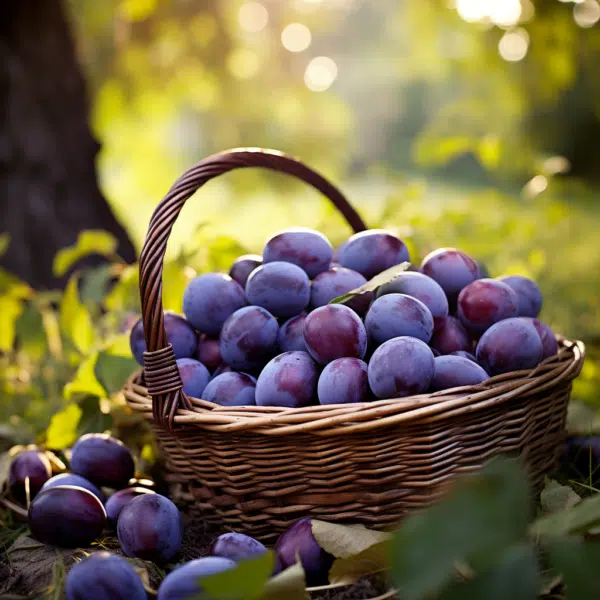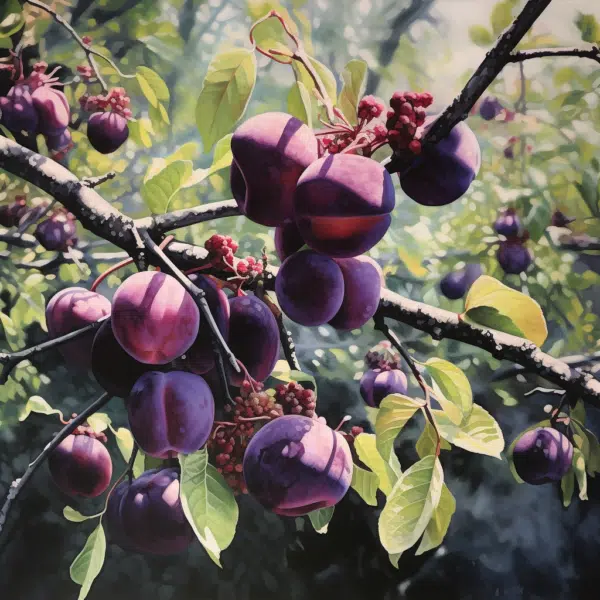
If you’ve ever relished the juicy, sweet flavor of a plum that has just been picked, you may have wondered if you could raise your own plum tree from seed. The good news is that cultivating a plum tree from seed can be an enjoyable and fulfilling gardening endeavor in addition to being feasible. We will walk you through every stage of developing a plum tree from seed in this detailed tutorial, from comprehending the fundamentals of plum tree growth to taking care of your transplanted tree.
Plum Tree Growth Basics
Understanding the fundamentals of plum tree growth is essential before you start your adventure to grow plum trees. You may lay the groundwork for a fruitful planting experience by being aware of the plum tree’s life cycle and the best growing environments.
The Plum Tree's Life Cycle
The life cycle of a plum tree involves several stages. It starts as a seed, which grows into a seedling during germination. This stage is crucial for photosynthesis. As it matures, it develops robust roots, leaves, and branches. The sapling then becomes a full-grown plum tree, capable of bearing plums after a few years. The tree’s limbs are well-established and provide a solid framework for fruit production. If given the right attention and upkeep, the plum tree will continue to yield plums annually.

Growing Conditions for Plum Trees
- Plum trees prefer full sun for photosynthesis, requiring at least six hours of direct sunlight daily.
- Soil rich in organic materials and effective drainage is ideal for plum trees.
- Compost or well-rotted manure can improve soil fertility and drainage.
- Plum trees require specific chilling hours (32°F to 45°F) during the dormant season for healthy flowering and fruiting.
- Proper spacing is crucial for optimal ventilation and sunlight penetration.
- Understanding the life cycle of a plum tree and the best growing environments can help in starting the growing journey.
How to Get Ready to Plant That Plum Seed
It’s time to get ready to plant your plum seed now that you have a solid understanding of plum tree growth. This entails choosing the appropriate plum seed and assembling the required equipment and supplies.
Selecting the Proper Plum Seed
It’s crucial to choose a healthy plum seed from a plum variety you like while making your selection. Select plums whose seeds are completely formed and set them aside for planting. Plum seeds are also available from reliable internet seed suppliers or nurseries.
Essential Instruments and Supplies
Prior to beginning the plum seed planting process, gather all required equipment and supplies. A pot or container with drainage holes, potting soil, water, a little trowel or scoop, and potting soil are required. To prevent giving your seedling any pests or diseases, make sure your soil and pot are clean.
The Method for Sowing a Plum Seed
It’s time to start planting now that you have your plum seed and the necessary equipment. To do this, the seed must be ready for planting and sown in a pot.
Getting Ready to Plant the Seed
It’s critical to get the plum seed ready for optimum germination before planting. Begin by carefully washing the seed under running water to remove any remaining fruit pulp. To aid in softening the outer shell and encouraging germination, you can also soak the seed in water for an entire night.
The Seed is Planted in a Pot
After preparing the plum seed, add potting soil to the container, allowing approximately an inch of space at the top. Create a little, one-inch-deep hole in the ground and insert the seed into it. Gently pat down the earth after covering the seed. Till the soil is uniformly damp but not soggy, thoroughly water it.
Seedling Plum Care
To guarantee your plum seedling grows healthily, it’s critical to provide it the proper care and attention after planting.
Feeding and Watering
For the duration of the germination process, keep the soil continually moist. Water the seedling sparingly so as not to uproot the seed or create a soggy environment. You might need to modify your watering plan as the seedling grows to suit its requirements. To provide the seedling the nutrition it needs to grow, you can also feed it a balanced fertilizer.

Tracking the Growth of Seedlings
As your plum seedling grows, pay special attention to it. Keep an eye out for indicators of robust growth, such the appearance of leaves and the development of a sturdy stem. Keep an eye out for any indications of pests or illnesses on the seedling and take necessary measures if needed. Your seedling will successfully grow into a healthy plum tree with the right care and attention.
Changing the Location
When your plum seedling has developed into a sturdy tree, it’s time to think about moving it to its permanent site.
How to Get a Transplant
When your plum tree is dormant, which is usually in early spring or late fall, is the ideal time to transfer it. Pick a spot that gets enough of sunlight and soil that drains well to provide the perfect environment for plum tree growth. Make sure the hole you dig is just a little bit bigger than the tree’s root ball, then carefully plant the tree in it. To keep the tree sturdy and erect, backfill the hole with dirt. After transplanting, give the tree plenty of water.
Taking Care of Your Moved Tree
Your plum tree needs to be properly cared for after transplantation in order to succeed in establishing itself and to continue growing. Give the tree regular watering, especially in the first year following its transplant. To retain moisture and prevent weed growth, mulch the area surrounding the tree’s base. To keep the tree healthy and in shape, prune it as needed. Your transplanted plum tree will flourish and provide you with an abundant crop of delicious plums if you give it the proper care and attention.
In summary
Planting a plum tree from seed is a fun and rewarding gardening endeavor. You can successfully cultivate your own plum tree and experience the thrill of watching a seedling grow into a fruitful tree by following the above step-by-step guide. Recall to know the fundamentals of growing plum trees, to carefully prepare your plum seed, and to provide your tree the proper care and attention at each stage of its life cycle. You can soon be gathering your own luscious plums from your backyard with perseverance and hard work.


